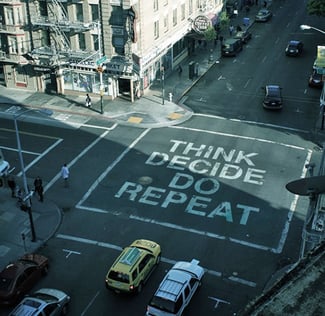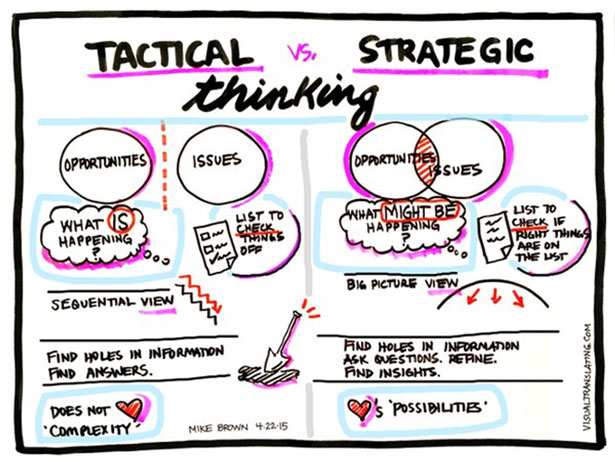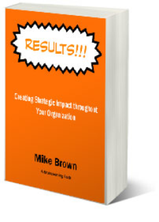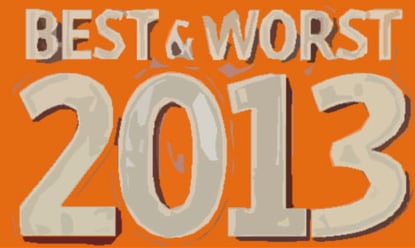Business people can become more proficient at strategic thinking skills through using strategic thinking exercises and tools.
We’ve seen this play out time and time again.
That’s why we don’t buy it when someone says he or she isn’t strategic. Maybe the person isn’t displaying the characteristics of strategic thinking. That doesn’t translate into not being strategic, however.
6 Characteristics of Strategic Thinking Skills vs. Tactical Thinking
If you’re an executive and make a concerted effort to support a team member with strong strategic thinking exercises and tools, what type of impact should you expect?
Here are the differences we see between the two:
A tactical thinker keeps opportunities and issue separate so they are digestible. A strategic thinker integrates these same ideas to create powerful connections.
A tactical thinker looks at what is happening at face value. A strategic thinker imagines what might be happening that isn’t readily apparent.
A tactical thinker works to fill information holes, answering one question and moving to the next without asking any other questions in between. A strategic thinker refines information to build a broad knowledge base with robust insights.
A tactical thinker is focused on checking items off a list to get it finished. A strategic thinker works to make sure the right things are on the list in the first place.
A tactical thinker is sequential, focusing on one thing followed by another. A strategic thinker is holistic, looking for the next biggest result to deliver.
A tactical thinker avoids complexity. A strategic thinker embraces possibilities.
Strategic + Tactical = Creating Strategic Impact
And when it comes to results, if you want to learn about the advantages of engaging more of your team in creating strategic impact, we have just the mini-book for you
Then let’s talk about how to make it happen for your organization.






